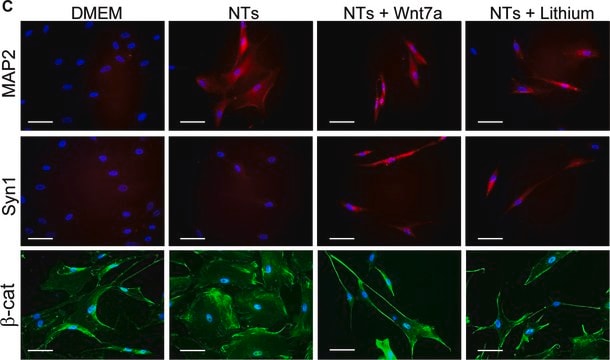G9282
Monoclonal Anti-Glutamate antibody produced in mouse
clone GLU-4, ascites fluid
About This Item
Produits recommandés
Source biologique
mouse
Conjugué
unconjugated
Forme d'anticorps
ascites fluid
Type de produit anticorps
primary antibodies
Clone
GLU-4, monoclonal
Contient
15 mM sodium azide
Espèces réactives
wide range
Technique(s)
indirect ELISA: 1:10,000 using in situ prepared L-glutamate-glutaraldehyde-BSA conjugate for coating
Isotype
IgG1
Conditions d'expédition
dry ice
Température de stockage
−20°C
Modification post-traductionnelle de la cible
unmodified
Informations sur le gène
human ... GRM1(2911)
Spécificité
Immunogène
Application
Immuno-electron microscopy (1 paper)
- immunolabeling of glutamate in the lamina of the Drosophila visual system
- immunocytochemistry at a working dilution of 1:20,000 to detect glutamate using heart and extrinsic nerves of stomatopod crustacean, Squilla oratoria
- immunofluorescent staining as a primary antibody at a working dilution of 1:1000 using cryosections of brains and embryos from mice
- use as a primary antibody to measure the glutamate release in synaptosome preparations
Actions biochimiques/physiologiques
Clause de non-responsabilité
Not finding the right product?
Try our Outil de sélection de produits.
Code de la classe de stockage
10 - Combustible liquids
Classe de danger pour l'eau (WGK)
WGK 3
Point d'éclair (°F)
Not applicable
Point d'éclair (°C)
Not applicable
Certificats d'analyse (COA)
Recherchez un Certificats d'analyse (COA) en saisissant le numéro de lot du produit. Les numéros de lot figurent sur l'étiquette du produit après les mots "Lot" ou "Batch".
Déjà en possession de ce produit ?
Retrouvez la documentation relative aux produits que vous avez récemment achetés dans la Bibliothèque de documents.
Notre équipe de scientifiques dispose d'une expérience dans tous les secteurs de la recherche, notamment en sciences de la vie, science des matériaux, synthèse chimique, chromatographie, analyse et dans de nombreux autres domaines..
Contacter notre Service technique







